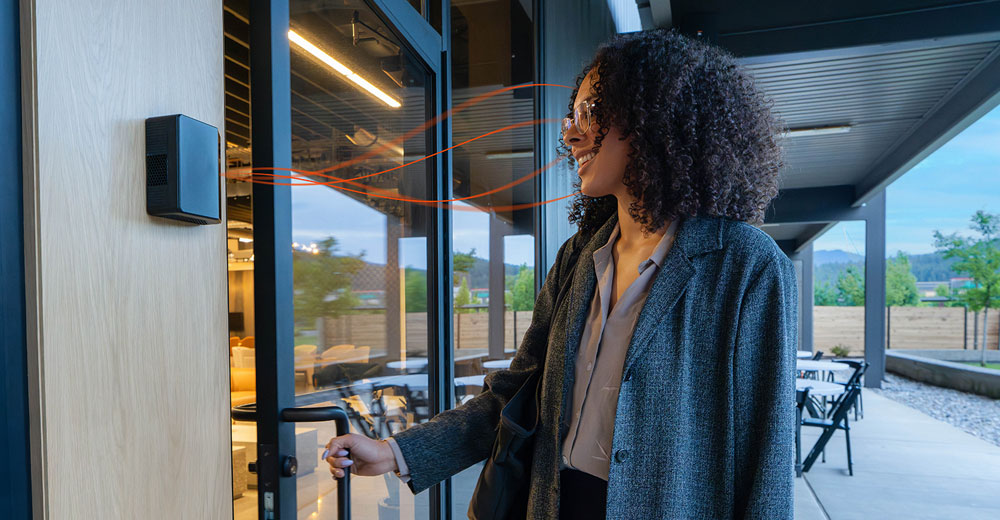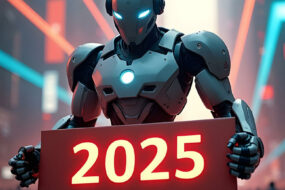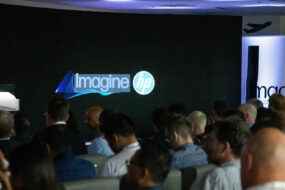
Workplace safety is becoming an increasingly important concern in modern environments. The advancements in artificial intelligence (AI) and machine learning (ML) are driving innovative hardware solutions to mitigate the risk of unauthorized access.
Managing facilities or organizational teams now comes with a heightened responsibility for safety across various settings, including workplaces, campuses, and hospitals. This demand for secure, opt-in solutions is pushing for more advanced security technologies.
The Occupational Safety and Health Administration (OSHA) recently endorsed AI-based solutions, stating that “the integration of AI in workplace safety marks the beginning of a transformative era for occupational health.” Alcatraz AI is at the forefront of this movement, offering AI-driven biometric access control solutions that are revolutionizing security with facial recognition.
These solutions set a new benchmark for access control, moving away from outdated methods and allowing workers to use their facial features as credentials. Only those who opt into facial authentication can gain access, further enhancing building security.
Alcatraz AI’s flagship product, Rock X, was unveiled in April at the International Security and Conference Exposition (ISC West 2024). This advanced AI-powered system redefines outdoor security with high-performance facial recognition that works in all lighting and weather conditions.
“Convincing people to use biometrics consistently and have a positive experience has always been a challenge. That’s why widespread adoption has been slow until recently,” said Blaine Frederick, VP of product at Alcatraz AI, in an interview with TechNewsWorld.
Flexible Facial Recognition Integration Eases Deployment
One of the key advantages of facial recognition devices is their ability to integrate seamlessly with any existing access control or video management system.
For instance, a company with numerous card readers can easily install the units above or next to the existing readers, tapping into the current cabling infrastructure and quickly commissioning the system.
“You don’t need to replace any existing panels or access control systems,” said Frederick.
The video feeds will integrate directly with any virtual machine systems or video management systems, offering an eye-level view of people entering and leaving the premises, thereby reducing installation costs.
Post-installation, ongoing costs vary depending on the subscription plan, which includes both on-premises and cloud options.
For some clients, Alcatraz AI hosts the recognition software in its cloud, either in a single-tenant or multi-tenant environment, using AWS. Other clients prefer the platform software to be housed on their own servers, behind their firewalls.
“Some companies are ahead of the curve with cloud computing and prefer not to handle server maintenance or infrastructure. So, we offer complete flexibility in how you deploy the system,” Frederick added.
AI Overcomes Outdated Biometric Methods
Biometric technology, including facial and fingerprint recognition, has been in use for years. However, the equipment often relied on outdated methods that were not powerful enough. Many companies still used traditional, old-school face biometrics to enroll their workers.
“As you enroll a person, a bit string is created and stored in memory. Each time the person appears, the system compares the stored bit string to a new one to check for a match,” explained Frederick.
People’s appearances naturally change over time, but static templates remain the same. Without regular updates from IT or HR, these systems gradually lose reliability and become harder to use, he added.
“With modern AI processors and GPUs now being smaller and available at the edge, we can solve these old issues. Our device has a built-in GPU, and all AI/ML processing happens at the edge, offering redundancy so you don’t have to worry about the network,” Frederick noted.
Biometric Access Control Use Cases for Workplace Safety
This new technology enhances the accuracy of on-site safety. For example, Alcatraz AI’s platform can also detect tailgate entries, a common security concern.
Frederick explained that security directors recognize that tailgating is often not malicious, but a result of people being polite.
“I swipe my badge, go through the door, and hold it open for the person behind me. That person may or may not be authorized to enter,” he suggested.
The reality is that there is a strong need for technology that can determine if someone is authorized and alert security in real time. This is crucial for maintaining safety in the workplace.
“Being able to verify that the right people are in the right places is critical for many companies, whether it’s a safety issue or not. For example, a former employee could enter a building to cause harm or launch a cyberattack. Many data breaches don’t happen because of external hacking; they happen when someone gains physical access to a company’s infrastructure,” he pointed out.
This need for effective access control exists in a wide range of environments, including offices, stadiums, college campuses, pharmaceutical and life sciences facilities, retail spaces, and airports.







